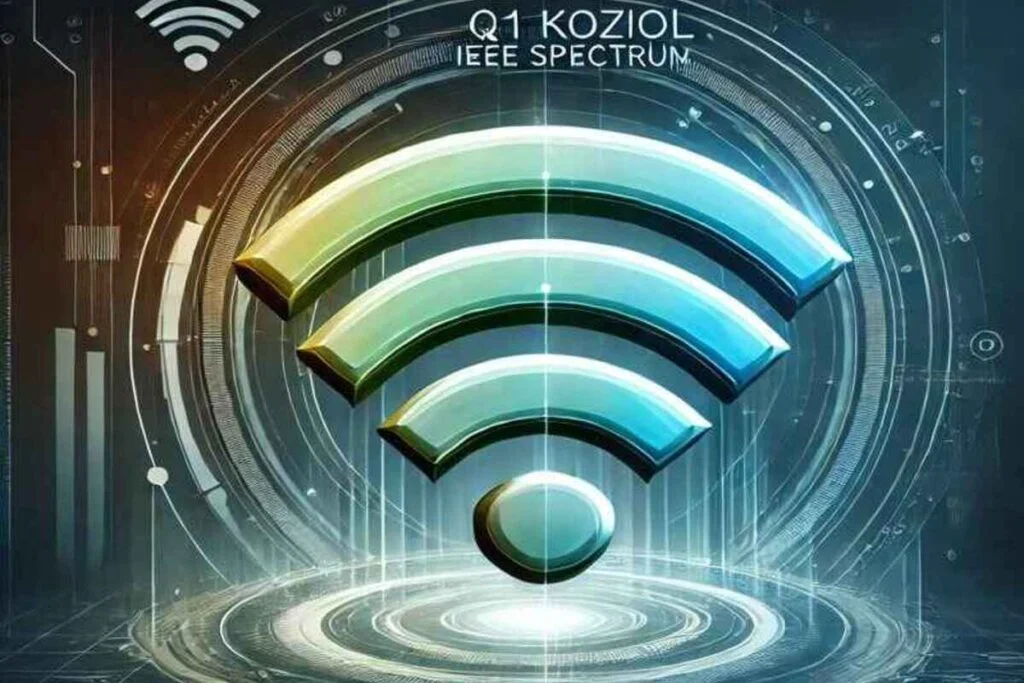WiFi has become an indispensable part of modern life, powering everything from smartphones to smart homes. The ongoing evolution of wireless technologies is critical to ensuring faster, more secure, and reliable connections. Among the recent advancements in this space is WiFi Q1 Koziol, a term that has garnered attention in the tech world and on platforms like IEEE Spectrum. But what does this innovation tell us about the future of connectivity? Let’s delve deeper into the subject.
Understanding WiFi Q1 Koziol and IEEE Spectrum
WiFi Q1 Koziol is a name that signifies breakthroughs in wireless technology, aligning with the mission of enhancing global connectivity. It encompasses cutting-edge developments in speed, efficiency, and security, making it a focal point for industry leaders. IEEE Spectrum, the leading voice in engineering and technology, has played a crucial role in spotlighting these advancements, offering expert analysis and fostering a deeper understanding of the technology.
IEEE Spectrum’s reputation as a trusted resource stems from its rigorous exploration of emerging technologies. It provides a platform for thought leaders, researchers, and technologists to share insights, making it an ideal source to understand innovations like WiFi Q1 Koziol. This collaboration between industry expertise and innovative technology paves the way for a connected future.
Key Features and Benefits of WiFi Q1 Koziol
WiFi Q1 Koziol introduces a range of features that address longstanding connectivity challenges. One of its most notable benefits is the enhancement of connectivity standards. With significantly higher speeds and improved network stability, it surpasses earlier iterations, offering seamless browsing, streaming, and data sharing experiences.
Another standout feature is its focus on energy efficiency. Unlike traditional WiFi technologies that can drain device batteries quickly, WiFi Q1 Koziol optimizes power consumption. This is particularly beneficial for Internet of Things (IoT) devices, which often rely on long-lasting battery performance to function effectively.
Security is another critical aspect of WiFi Q1 Koziol. As cyber threats grow increasingly sophisticated, the technology incorporates advanced encryption protocols to safeguard user data. This ensures that personal and corporate networks are protected from potential breaches, fostering trust in wireless solutions.
How IEEE Spectrum Illuminates WiFi Q1 Koziol
IEEE Spectrum’s analysis of WiFi Q1 Koziol sheds light on its transformative potential. Through detailed articles, expert interviews, and in-depth research, the platform provides a comprehensive understanding of the technology’s applications and implications. It emphasizes how WiFi Q1 Koziol addresses the demands of a connected world, from supporting high-bandwidth activities to enabling real-time communication.
The insights offered by IEEE Spectrum are invaluable for professionals and enthusiasts alike. By bridging the gap between complex technical details and practical applications, the platform ensures that innovations like WiFi Q1 Koziol are accessible to a broader audience.

Impacts of WiFi Q1 Koziol on Connectivity
WiFi Q1 Koziol is poised to revolutionize various sectors by enabling faster, more reliable connections. In smart cities, for instance, the technology facilitates the seamless integration of connected infrastructure. This includes smart traffic management systems, energy-efficient buildings, and real-time public services that rely on uninterrupted connectivity.
The IoT ecosystem also stands to benefit significantly from WiFi Q1 Koziol. Devices ranging from smart home appliances to industrial sensors can operate more efficiently, thanks to reduced latency and enhanced data transfer capabilities. This opens the door to new possibilities in automation, healthcare, and beyond.
For consumers, WiFi Q1 Koziol offers an elevated user experience. High-definition streaming, online gaming, and remote work become more accessible and enjoyable, regardless of the number of devices connected to a network. This ensures that the technology caters to both personal and professional needs.
Challenges and Considerations
While WiFi Q1 Koziol represents a leap forward, it is not without challenges. One of the primary hurdles is the cost associated with implementing advanced WiFi technologies. For businesses and consumers alike, upgrading to the latest standards can require significant investment in hardware and infrastructure.
Technical limitations also pose challenges. Ensuring compatibility with existing devices and networks requires careful planning and coordination. Additionally, the deployment of WiFi Q1 Koziol in remote or underserved areas may face logistical and financial barriers, potentially delaying its widespread adoption.
Despite these challenges, the potential benefits of WiFi Q1 Koziol far outweigh its limitations. As the technology matures, ongoing research and innovation will address these issues, paving the way for broader accessibility and affordability.
The Future of Connectivity with WiFi Q1 Koziol
WiFi Q1 Koziol sets the stage for the next generation of wireless technology, including the eventual transition to 6G. Its focus on speed, efficiency, and security aligns with the demands of an increasingly digital world, where connectivity is a fundamental requirement.
Globally, the technology has the potential to bridge the digital divide by providing reliable internet access to underserved communities. This can empower individuals and businesses, fostering economic growth and social development. The integration of WiFi Q1 Koziol into public and private networks will play a key role in achieving this goal.
IEEE Spectrum predicts that WiFi Q1 Koziol will continue to evolve, incorporating advancements in artificial intelligence and machine learning to enhance network performance. These developments will further solidify its position as a cornerstone of modern connectivity.
Also Read This Blog: Upcoming Fixtures SFFAREBoxing: The Matches Every Fan Should Watch
Conclusion
WiFi Q1 Koziol, as highlighted by IEEE Spectrum, is more than just an incremental improvement in wireless technology. It represents a paradigm shift in how we connect, communicate, and collaborate. By addressing key challenges in speed, efficiency, and security, it paves the way for a more connected future.
As we embrace this innovation, it is essential to recognize the role of platforms like IEEE Spectrum in driving awareness and understanding. Their contributions ensure that technologies like WiFi Q1 Koziol are not only developed but also effectively utilized to benefit society.
The future of connectivity is bright, and WiFi Q1 Koziol stands at the forefront of this transformation. Whether you are a tech enthusiast, a professional, or a consumer, staying informed about these advancements will ensure that you are well-prepared for the next wave of wireless innovation.
FAQs
1. What is WiFi Q1 Koziol?
WiFi Q1 Koziol refers to advancements in wireless networking technology that improve speed, efficiency, and security. It focuses on addressing the demands of modern connectivity, such as IoT devices and high-bandwidth applications.
2. Why is IEEE Spectrum important for understanding WiFi Q1 Koziol?
IEEE Spectrum is a trusted platform for in-depth analysis of emerging technologies. It provides expert insights into WiFi Q1 Koziol’s features, benefits, and its role in shaping the future of wireless communication.
3. How does WiFi Q1 Koziol benefit consumers?
It enhances user experiences by delivering faster speeds, improved security, and better energy efficiency. This makes online activities like streaming, gaming, and remote work smoother and more reliable.
4. What challenges does WiFi Q1 Koziol face?
Some challenges include the high cost of implementation, technical compatibility issues, and limited accessibility in underserved areas. However, ongoing innovation is addressing these obstacles.
5. What is the future of connectivity with WiFi Q1 Koziol?
WiFi Q1 Koziol is paving the way for next-generation technologies like 6G. Its advancements in speed, efficiency, and security will drive innovations in smart cities, IoT ecosystems, and bridging the digital divide globally.





